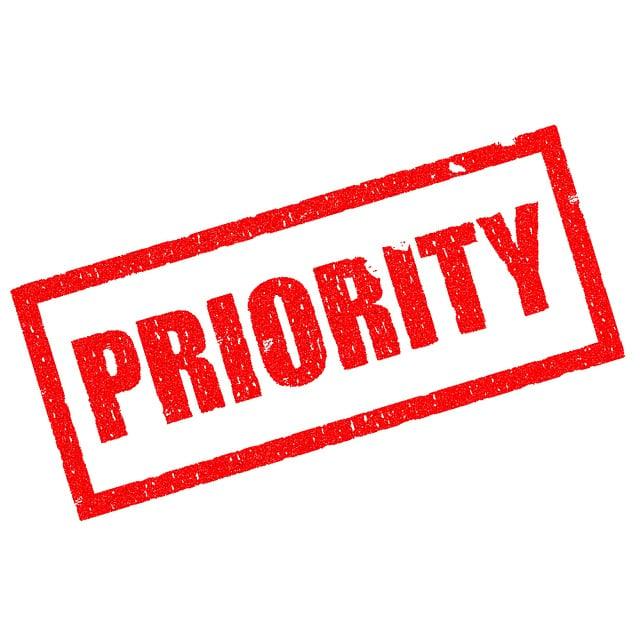- Introduction
- Importance of Plagiarism Checkers
- Top Free Online Plagiarism Checkers
- How to Use Plagiarism Checkers Effectively
- Choosing the Right Plagiarism Checker
- Conclusion
- FAQs
Introduction
In the academic and content creation worlds, maintaining originality is crucial. Whether it’s for an essay, a research paper, or even a blog post, ensuring your work is free from plagiarism is essential. Luckily, there are numerous free online plagiarism checkers available that can help both students and professionals identify duplicate content efficiently. This article will explore the importance of plagiarism checkers, present some of the best free options, provide tips on using them effectively, and guide you on how to choose the right tool for your needs.
Importance of Plagiarism Checkers
Understanding the significance of plagiarism checkers begins with recognizing the implications of plagiarism itself. Plagiarism can lead to severe consequences academically and professionally, including loss of credibility, legal ramifications, and in extreme cases, expulsion from educational institutions.
As one delves into writing, whether for academic purposes or blogging, original content becomes paramount. With the internet offering vast information at our fingertips, it becomes all too easy to unintentionally use someone else's words or ideas without proper attribution. This is where plagiarism checkers step in. They serve as a safeguard against unintentional malpractice, ensuring that the integrity of the writer is maintained.
Academic institutions often utilize plagiarism detection tools to verify the authenticity of student submissions. Here, an effective plagiarism checker can ensure compliance with academic standards and prevent any accidental overlap with existing literature. In professional environments, companies likewise demand originality to uphold their brand image and reputation; hence, having robust plagiarism checking methods is essential across sectors.
In essence, the necessity of these tools extends beyond just avoiding penalties; they promote ethical writing practices. By encouraging authors to create original content and cite sources correctly, it ultimately leads to a more credible body of knowledge available for readers.
The right plagiarism checker not only identifies copied text but also aids in improving writing skills by suggesting paraphrasing opportunities. As such, understanding the various options available will greatly enhance one's writing journey.

(Image: Pixabay/@TheDigitalArtist)
Top Free Online Plagiarism Checkers
With a plethora of plagiarism checkers available online, it can be overwhelming to determine which ones are effective and user-friendly. Here, we break down some of the best free options available to cater to your plagiarism detection needs:
1. **Grammarly**: Although primarily known for grammar and spell-checking, Grammarly includes a plagiarism detection feature that scans text against billions of web pages. It’s particularly useful for writers who want a comprehensive tool for editing and proofreading, along with checking for duplicated content.
Grammarly offers both free and premium versions, with the plagiarism feature available in the paid plan. Its user-friendly interface makes it suitable for writers of all skill levels.
2. **Quetext**: Quetext is a straightforward plagiarism checking tool that provides accurate results efficiently. What sets Quetext apart is its “DeepSearch” technology which utilizes contextual analysis to find plagiarism in attributed and non-attributed content. The free version allows a limited number of checks, while the Pro version unlocks unlimited searches and additional features like citation assistance.
3. **Plagscan**: This tool offers a free version that permits users to check documents for plagiarism. Designed primarily for academics and professionals, Plagscan emphasizes detailed reports highlighting the percentage of originality. Plagscan integrates seamlessly with various CMS platforms and educational systems, making it a popular choice among institutions.
4. **Small SEO Tools**: If you’re looking for a very basic, no-frills plagiarism checker, Small SEO Tools has you covered. While it may not have the most advanced features, it provides a valuable service for casual users needing quick checks. Users simply copy and paste their text, and the checker will scan the internet for duplicates. The ease of use, along with additional tools for grammar and SEO, makes it appealing for beginners.
Each of these tools has its strengths and weaknesses, so depending on your needs, one may suit you better than the others. Always consider the volume of content you need to check and the specific features you require.

(Image: Pixabay/@Deviser)
How to Use Plagiarism Checkers Effectively
Once you've selected a plagiarism checker suitable for your needs, understanding how to use it effectively is equally important. Here are some step-by-step directions to maximize the utility of these tools:
1. **Prepare Your Text**: Before running your document through a plagiarism checker, always make sure that it’s in its final form. This means having all parts of the paper, including citations, footnotes, and bibliographies, ready for review. A cleaner version ensures more accurate results, enabling the checker to focus solely on the body of your work.
2. **Paste Your Text**: Most plagiarism checkers operate on a simple copy-paste method. Copy your text from your document and paste it into the designated area in the checker interface. Some tools may allow you to upload files directly, providing flexibility in how you submit your content for analysis.
3. **Select Settings**: Depending on the tool, you may have options for adjusting settings before you perform the check. These can include choosing whether to check only for exact matches or all forms of similarity. Selecting the appropriate settings helps tailor the experience to your specific requirements.
4. **Review the Results**: After running the check, carefully examine the report generated. Look for sections highlighted as potentially plagiarized and assess the source of any matches against your work. Note that not all overlaps constitute plagiarism—properly cited quotes, for instance, may show up as similar but are acceptable if referenced correctly.
It is essential to cross-reference any flagged sections, confirming whether they were used legitimately or if fixes are necessary.
5. **Make Necessary Adjustments**: Once you identify potential issues, make corrections to your text. If segments are found that closely resemble existing sources without sufficient attribution, rephrase, paraphrase, or cite accordingly.
Utilizing a plagiarism checker effectively can significantly enhance your writing process and ensure that your final output meets high standards of originality and quality.

(Image: Pixabay/@Clker-Free-Vector-Images)
Choosing the Right Plagiarism Checker
When faced with several options, selecting the right plagiarism checker can feel daunting. Here are essential factors to consider:
1. **Scope of Check**: Different tools offer varying scopes of coverage. Some may check only internet resources, while others might access academic databases and journals. Assess what types of content you'll need to check against – academic papers, articles, blogs, etc. – and choose a tool that offers broad research capabilities.
2. **User Experience**: Look for a plagiarism detector that is user-friendly and intuitive. A complicated interface might lead to errors or misunderstanding on how to use their services. Spend time exploring previews or tutorials to better understand the platform before fully committing to it.
3. **Accuracy and Reporting**: Consider the accuracy of the detector in flagging content. Some tools provide detailed reports that highlight similarities, while others might merely indicate overlap percentages. Opt for those that allow you to dive deeper into the reports, furnishing comprehensive clarity about what aspects of your work may need attention.
4. **Additional Features**: Many plagiarism checkers come with add-on features like grammar checks, citation generation, and reference management. If these supplementary features align with your needs, it can save you time and improve overall writing quality.
5. **Cost Considerations**: While focusing on free tools, keep in mind that many offer premium options as well. Often, subscribing to a paid version grants unlimited usage, advanced insights, and extra functionalities. If your work demands frequent checks, weigh the cost against the value provided to make an informed decision.

(Image: Pixabay/@Tumisu)
Conclusion
In an age dominated by information sharing and content creation, leveraging plagiarism checkers becomes an essential part of maintaining the integrity of your work. From academic essays to professional documents, these tools serve as a buffer against unintentional misconduct and inspire a culture of originality and ethical writing practices. Through understanding their importance, recognizing the top tools, utilizing them effectively, and knowing what to consider when choosing a checker, writers across disciplines can fortify their commitment to producing authentic content. Make use of the free resources available, and enable yourself with the knowledge that your work stands free of plagiarism challenges.
FAQs
What is a plagiarism checker?
A plagiarism checker is a digital tool designed to identify instances of plagiarism by comparing text against a database of existing written works, including internet sources and published materials, detecting similarities and overlaps.
Are free plagiarism checkers effective?
Yes, many free plagiarism checkers offer effective functionality, though they may have limitations on scope, accuracy, and reporting compared to premium versions. It’s vital to assess your needs and choose a suitable tool accordingly.
Can plagiarism checkers find all forms of plagiarism?
While plagiarism checkers are excellent at identifying matched text or uncredited use of ideas, they might not catch all forms. Skills like paraphrasing properly, understanding citation norms, and contextually analyzing originality remain critical human skills that these tools cannot replace entirely.
Do I have to pay for a good plagiarism checker?
Not necessarily; multiple free options exist that can deliver quality results. However, investing in a paid plagiarism checker often yields additional features and greater accuracy, especially for professionals or academic writers demanding high-level assessments.
How often should I use a plagiarism checker?
This depends on your writing frequency. Regular writing tasks should involve preliminary checks before submission or publication to ensure originality is upheld, thus reducing risks associated with plagiarism.
